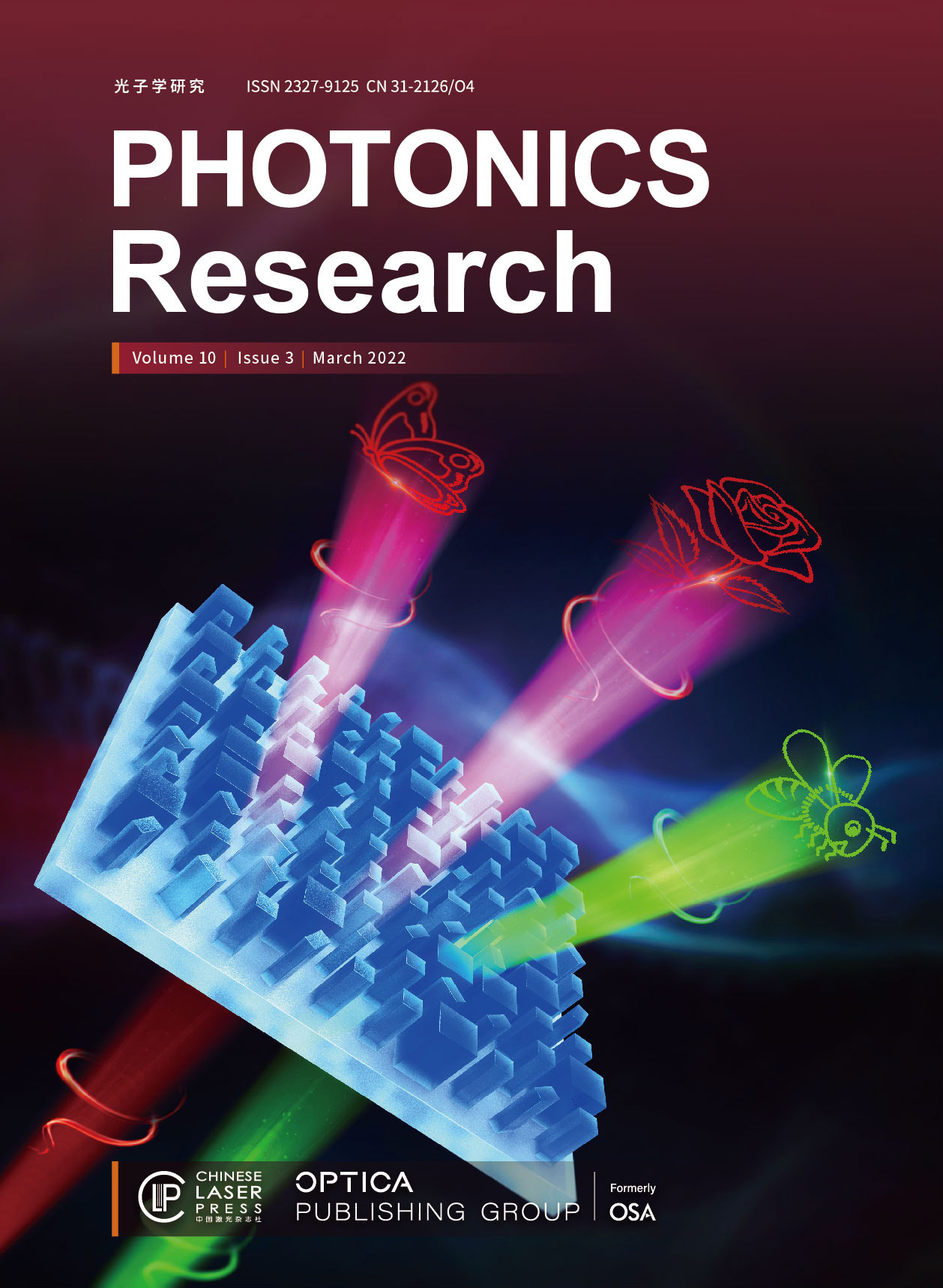Recently, significantly raised interests have emerged for the 2 µm waveband as an extended new window for fiber optic communication. Much research progress has been made on the photonic integrated circuits for the 2 µm waveband, especially on the CMOS-compatible silicon-on-insulator wafer. In this work, a silicon integrated microring modulator (MRM) with record high-speed performances at the 2 µm waveband was demonstrated. An L-shaped PN junction was specially designed for 2 µm to achieve a high modulation efficiency with
- Publication Date: Feb. 10, 2022
- Vol. 10, Issue 3, A35 (2022)
Nonlinear optics has not stopped evolving, offering opportunities to develop novel functionalities in photonics. Supercontinuum generation, a nonlinear optical phenomenon responsible for extreme spectral broadening, attracts the interest of researchers due to its high potential in many applications, including sensing, imaging, or optical communications. In particular, with the emergence of silicon photonics, integrated supercontinuum sources in silicon platforms have seen tremendous progress during the past decades. This article aims at giving an overview of supercontinuum generation in three main silicon-compatible photonics platforms, namely, silicon, silicon germanium, and silicon nitride, as well as the essential theoretical elements to understand this fascinating phenomenon.
.- Publication Date: Mar. 01, 2022
- Vol. 10, Issue 3, A43 (2022)
- Publication Date: Feb. 22, 2022
- Vol. 10, Issue 3, 678 (2022)
- Publication Date: Feb. 22, 2022
- Vol. 10, Issue 3, 668 (2022)
- Publication Date: Mar. 01, 2022
- Vol. 10, Issue 3, 758 (2022)
- Publication Date: Feb. 22, 2022
- Vol. 10, Issue 3, 687 (2022)
- Publication Date: Feb. 22, 2022
- Vol. 10, Issue 3, 697 (2022)
- Publication Date: Feb. 09, 2022
- Vol. 10, Issue 3, 618 (2022)
- Publication Date: Feb. 22, 2022
- Vol. 10, Issue 3, 731 (2022)
- Publication Date: Feb. 22, 2022
- Vol. 10, Issue 3, 747 (2022)
- Publication Date: Feb. 09, 2022
- Vol. 10, Issue 3, 637 (2022)
- Publication Date: Feb. 22, 2022
- Vol. 10, Issue 3, 711 (2022)
- Publication Date: Mar. 01, 2022
- Vol. 10, Issue 3, 834 (2022)
- Publication Date: Feb. 09, 2022
- Vol. 10, Issue 3, 628 (2022)
- Publication Date: Mar. 01, 2022
- Vol. 10, Issue 3, 786 (2022)
- Publication Date: Feb. 22, 2022
- Vol. 10, Issue 3, 662 (2022)
- Publication Date: Mar. 01, 2022
- Vol. 10, Issue 3, 820 (2022)
- Publication Date: Mar. 01, 2022
- Vol. 10, Issue 3, 828 (2022)
- Publication Date: Feb. 22, 2022
- Vol. 10, Issue 3, 703 (2022)
- Publication Date: Feb. 22, 2022
- Vol. 10, Issue 3, 740 (2022)
- Publication Date: Mar. 01, 2022
- Vol. 10, Issue 3, 810 (2022)
- Publication Date: Feb. 17, 2022
- Vol. 10, Issue 3, 646 (2022)
- Publication Date: Mar. 01, 2022
- Vol. 10, Issue 3, 777 (2022)
- Publication Date: Mar. 01, 2022
- Vol. 10, Issue 3, 793 (2022)
- Publication Date: Feb. 17, 2022
- Vol. 10, Issue 3, 653 (2022)
- Publication Date: Feb. 22, 2022
- Vol. 10, Issue 3, 719 (2022)
- Publication Date: Mar. 01, 2022
- Vol. 10, Issue 3, 769 (2022)
- Publication Date: Mar. 01, 2022
- Vol. 10, Issue 3, 802 (2022)
About the Cover
Schematic illustration of a hybrid quantitative correlation amplitude and phase holographic display based on an all-dielectric metasurface. Based on the wavelength and polarization selectivity of nanoantennas, the correlated holograms are encrypted by the combination of discrete wavelengths and same/opposite handedness circular polarization channels.














